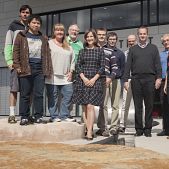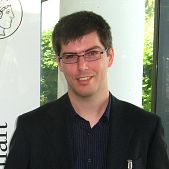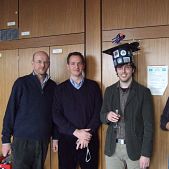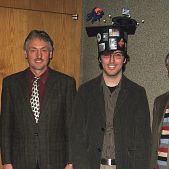
Researcher at Max Planck Institute for Solar System Research
Elias Roussos is an astrophysicist and researcher at Max Planck Institute for Solar System Research (MPS) in Germany since 2005. He specializes in the investigation of Saturn and its satellites.
He was born in Athens in 1979. The Greek scientist started his studies in the University of Patras and continued his studies at physics at the University of Athens. The source of his interest in astrophysics was NASA’s missions, and above all Pathfinder’s landing on the planet Mars in 1997 and the Cassini spacecraft mission to Saturn.
He continued his studies at the International Space University in Strasbourg on topics related to the design of space programs and missions. The German Max Planck Institute for Solar System Research (MPS) offered him a position and honored him for his doctoral thesis presented at the European Planetary Science Conference with the international distinction “Max Planck Society’s Otto-Hahn- Medal».
According to Mr. Roussos, Saturn itself is a miniature of a solar system, as it has the famous rings and about 60 moons, 10 of which are larger than the moon, while one, Titan, is comparable with earth.
Roussos’ research focuses on the study of Saturn’s space environment, the so-called magnetosphere, that is, the area where the magnetic field, that the planet produces, dominates the magnetic field of the sun. He is studying is the result of an experiment carried out at MPS and measures the high energy particles, like those trapped in Saturn’s magnetosphere. Monitoring this phenomenon is important for two main reasons. First, because these particles can damage the electronic systems of spacecraft approaching the planet. And secondly, because the bombardment of Saturn’s moons and moons by these high-energy particles alters their surface.













Greg Glenn
-25/08/2019 2:31 am
Hello Elias,
I just saw your paper that was published in February, 2019 entitled “Jovian Cosmic-Ray Protons in the Heliosphere: Constraints by Cassini Observations”.
I published a paper at arXiv about the same time (January, 2019) and one of my figures (Fig. 10) looks almost identical to your Figure labelled “Jupiter and Saturn connected through the Parker spiral for 2015 June 20. The angle Φ SJ is the longitudinal separation of Jupiter and Saturn, as discussed in Section 3.3”.
Unlike yourself, I am not an astrophysicist. I am an Aerospace Engineer specializing in spacecraft power systems and so know quite a bit about space weather and solar cycles. I worked on many NASA missions, including to MARS and VENUS. I would love it if you would read my short paper. It’s written more as an online Scientific American paper and not as if intended for publication in a technical journal. Therefore, it is not as technical as your paper published at the Astrophysical Journal and has much less mathematics.
Please read and I would love to hear your comments!
Link to paper: https://arxiv.org/abs/1901.10574
ευχαριστώ πολύ
–Greg